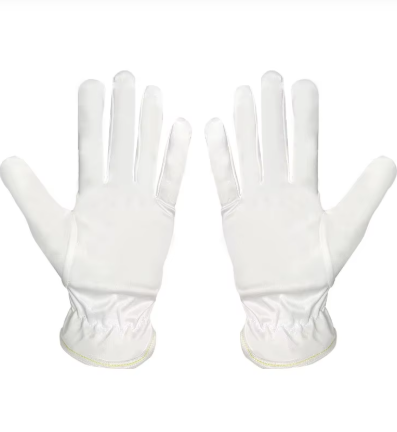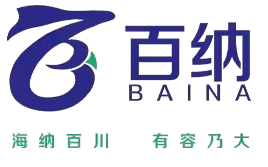-semiconductor အသုံးပြုရန် သီးခြားစာမျက်နှာစတנדרွေးများကို ဖော်ထုတ်ခြင်း
စမ်းပြီးသား စံနှုန်းများကို နီးနိမ့်စွာ သိရှိခြင်းသည် ကွန်ပျူတာ ထုတ်လုပ်မှုတွင် အရေးကြီးသည်။ အကြောင်းမှာ ညစ်ညမ်းမှု အဆင့်များကို နိမ့်ပါးစေရန်မှာ မဖြစ်မနေ လိုအပ်သောကြောင့် ဖြစ်သည်။ ISO အမျိုးအစားများကဲ့သို့သော စံနှုန်းများသည် အလွန်အာရုံစူးစိုက်မှု လိုအပ်သော ပတ်ဝန်းကျင်များတွင် အသုံးပြုသော စမ်းစွပ်ထားသော စက္ကူများတွင် ပါဝင်နိုင်သော အညစ်အကြေး သို့မဟုတ် အစိတ်အပိုင်းများ၏ အကန့်အသတ်များကို သတ်မှတ်ပေးသည်။ ဥပမာအားဖြင့် အချို့သော ထုတ်လုပ်သူများသည် အမှန်အကန်သော အစိတ်အပိုင်းများ စစ်ဆေးပြီးနောက် မှန်ကန်သော အမှုန်များ မရှိသော စက္ကူကို မစဉ်းစားတော့ပါ။ ဤလမ်းညွှန်ချက်များသည် စက်မှုလုပ်ငန်းတွင် အလုပ်များအတွက် စမ်းစွပ်ထားသော စက္ကူအမျိုးအစားကို ပုံဖော်ပေးသည်။ ကုမ္ပဏီများသည် ထုတ်လုပ်မှုတွင် အမှားအယွင်းများကို ရှောင်ရန်သာမက ပစ္စည်းများ မှားယွင်းမှုကြောင့် မျှော်လင့်မထားသော ရပ်ဆိုင်းမှုများမရှိဘဲ နေ့စဉ် ထုတ်လုပ်မှုကို ဆက်လက်လုပ်ဆောင်နေရန်အတွက် သူတို့ကို တိကျစွာ လိုက်နာကြသည်။
စမ်းသပ်မှုများအရ သန့်ရှင်းရေးစံနှုန်းများကို လိုက်နာခြင်းဖြင့် ကာဗွန်နျူကလိယပြောင်းလဲမှုကို တိုက်ရိုက်သက်ရောက်စေသည်ဟု သိရသည်။ အတွေ့အကြုံရှိသည့် လုပ်ငန်းရှင်များက ဤစည်းမျဉ်းများကို တိကျစွာလိုက်နာခြင်းသည် လုပ်ငန်းစဉ်ထိရောက်မှုကို သိသာစွာတိုးတက်စေသည်ဟု အမြဲပြောဆိုကြသည်။ ညစ်ညမ်းမှုပြဿနာများ လျော့နည်းလာသောအခါတွင် စုစုပေါင်းထုတ်လုပ်မှုကို ပိုမိုကောင်းမွန်စေပြီး ထုတ်ကုန်များတွင် အမြင်အားဖြင့် ပြဿနာများကို လျော့နည်းစေသည်။ အရည်အသွေးစစ်ဆေးမှုများကို အောင်မြင်သော သန့်ရှင်းရေးပစ္စည်းများသည် အထူးသဖြင့် အထွက်နှုန်းကို တိုးတက်စေရန်အတွက် အရေးကြီးသည်။ အထူးသဖြင့် အထွက်နှုန်းကို တိုးတက်စေရန်အတွက် အရည်အသွေးနိမ့်ပါးသော ပစ္စည်းများကြောင့် ဖြစ်ပေါ်သော ပြဿနာများကို ကာကွယ်ရန်အတွက် စမ်းသပ်မှုများအရ သိရသည်။
အရေးကြီးသော ဂုဏ်သတ္တိများ: Lint-Free နှင့် Low Particulate Generation
စမ်းနားကွန်ပျူတာ ထုတ်လုပ်ရေးအတွက် စစ်မှန်သော အမှုန်ကင်းသော စက္ကူသည် လုပ်ငန်းစဉ်အတိုင်း ထုတ်ကုန်အရည်အသွေးကို ထိန်းသိမ်းပေးနိုင်မည်ဖြစ်သည်။ ပုံမှန်စက္ကူများသည် ထုတ်လုပ်မှုနေရာများတွင် အနှံ့အပြားရှိနေတတ်သော အမျှင်များကို ထုတ်လုပ်လေ့ရှိသည်။ ထုတ်ကုန်အရည်အသွေးအာမခံရေးအတွက် အမျှင်များမှ ထွက်လာသော အငယ်စားအစိတ်အပိုင်းများသည် အခက်အခဲများဖြစ်စေသည်။ စက္ကူများမှ အမျှင်များ ထွက်ရှိမှုကို လျော့နည်းစေခြင်းဖြင့် ထုတ်လုပ်သူများသည် သန့်ရှင်းသောအခန်းများသို့ ဝင်ရောက်လာသော ပုံမှန်မဟုတ်သော အညစ်အကြေးများကို လျော့နည်းစေသည်။ စမ်းနားကွန်ပျူတာ ထုတ်လုပ်ရေးတွင် အလွန်သန့်ရှင်းသော အခြေအနေများကို လိုအပ်သောကြောင့် ဤအချက်သည် အရေးကြီးပါသည်။ ချစ်ပ်များ၏ အများအစားအားလုံးကို ပျက်စီးစေနိုင်သော အဏုမြူအဆင့်အမှုန်များပင် ဖြစ်သောကြောင့် သန့်ရှင်းရေးအခန်းများကို သန့်ရှင်းမှုအပြည့်ဖြင့် ထိန်းသိမ်းထားရန် အရည်အသွေးထိန်းချုပ်မှုအတွက် အလွန်အရေးကြီးပါသည်။
စီမံကိန်းထုတ်လုပ်မှုအပိုင်းတွင် အမှုန့်အမှုန့်ထုတ်လုပ်မှုနည်းပါးခြင်းသည် ချို့ယွင်းမှုနှုန်းကိုလျော့နည်းစေရာတွင် အဓိကကျသော အခန်းကဏ္ဍမှပါဝင်ပါသည်။ စမ်းသပ်ခန်းများမှ သုတေသနများအရ ထုတ်လုပ်သူများသည် သန့်ရှင်းသောစက္ကူထုတ်ကုန်များသို့ ပြောင်းလဲသုံးစွဲသောအခါ လေထဲတွင်ပါဝင်သောအမှုန့်အမှုန့်များကို ထင်ရှုးစွာလျော့နည်းစေပါသည်။ ဤအချက်သည် ချို့ယွင်းမှုစုစုပေါင်းကိုလည်း လျော့နည်းစေပါသည်။ ဒေတာများကလည်း ဤအချက်ကို အကြိမ်ကြိမ်အထောက်အပံ့ပြုပေးပါသည်။ အများအပြားသော စက်ရုံများတွင် ဤပြောင်းလဲမှုကို အကောင်အထည်ဖော်ပြီးနောက် သန့်ရှင်းသော ပတ်ဝန်းကျင်ကို အစီရင်ခံကြပါသည်။ ညစ်ညမ်းမှုအဆင့်အတန်းများ သက်သာစွာကျဆင်းလာပြီး ထုတ်လုပ်မှုစက်ပစ္စည်းများကိုကာကွယ်ရာတွင် ကူညီပေးပါသည်။ သန့်ရှင်းသောစက္ကူသည် စက်ရုံကွင်းပြင်တွင် ပိုမိုကောင်းမွန်စွာလည်ပတ်နိုင်စေရန် ကူညီပေးပါသည်။ ဤလုပ်ထုံးလုပ်နည်းများကို ကျင့်သုံးသော စီမံကိန်းထုတ်လုပ်ရေးစက်ရုံများသည် အမှုန့်အမှုန့်များကြောင့်ဖြစ်သော ပိတ်ဆို့မှုကာလကိုလျော့နည်းစေပြီး ထုတ်လုပ်မှုပမာဏကိုတိုးတက်စေသည်ဟု မကြာခဏပြောဆိုကြပါသည်။
ဆေးခန်းလုပ်ငန်းများ: ရဲတင်မှုနှင့် လေ့လာမှု
Class 100 ဆေးခန်းများ: Lint-Free Paper ပေါ်တွင် စက်မှုအချက်အလက်များ ရဲတင်မှု
Class 100 အဆင့်သတ်မှတ်ထားသည့် သန့်ရှင်းသောအခန်းများတွင် စက်ပစ္စည်းများ၏ အချက်အလက်များကို မှတ်တမ်းတင်ရာတွင် တင်းကျပ်သောစည်းမျဉ်းများကို လိုက်နာရပြီး အများအားဖြင့် မှန်ကန်ပြီး လိုအပ်ချက်များနှင့် ကိုက်ညီမှုရှိစေရန် အမှုန်များမပါသော စက္ကူများကို အသုံးပြုရပါသည်။ အထူးသဖြင့် ဆဲမီးကွန်ဒတ် စက်ရုံများကဲ့သို့ နေရာများတွင် အရေးကြီးသော ဤနေရာများတွင် ပုံမှန်စက္ကူများက အညစ်အကြေးများကို ယူဆောင်လာပြီး အထူးခြောက်ချာနေသော တိကျမှုများကို ပျက်ပြားစေသောကြောင့် အမှုန်များမပါသော စက္ကူများကို အသုံးပြုရန် လိုအပ်ပါသည်။ လက်တွေ့အရ သန့်ရှင်းသောစက္ကူများကို ပြောင်းလဲအသုံးပြုခြင်းဖြင့် မှတ်တမ်းတင်ခြင်း၏ တိကျမှုကို သိသာစွာ တိုးတက်စေပြီး ဤအရေးကြီးသော ပတ်ဝန်းကျင်များတွင် ထိန်းချုပ်မှုအရည်အသွေးကို ပိုမိုကောင်းမွန်စေပါသည်။ အတွေ့အကြုံရှိသော နည်းပညာရှင်များက မှတ်တမ်းတင်ခြင်းလုပ်ငန်းစဉ်အားလုံးတွင် အမှုန်များမပါသောစက္ကူများကိုသာ အသုံးပြုရန် အကြံပြုကြပါသည်။ ဤရိုးရှင်းသော လုပ်ဆောင်မှုက စနစ်အတွင်းသို့ ဝင်ရောက်လာသော မလိုလားအပ်သည့် အမှုန်များကို လျော့နည်းစေပြီး ပိုမိုကြီးမားသော Class 100 လိုအပ်ချက်များကို အခက်အခဲမရှိဘဲ ဖြည့်ဆည်းပေးရာ ကူညီပါသည်။
လိင်ဖရဲစာရင်းဖြင့် လေအရောင်းအတိုင်းမှူးမှု
စမ်းပြုလုပ်ဆောင်နေသည့် လေထုအရည်အသွေးကို စောင့်ကြည့်ရာတွင် အမှုန့်အမှောင့်များကို စုဆောင်းရန် သန့်ရှင်းသော စာရွက်များကို အသုံးပြုခြင်းသည် အလွန်ရိုးရှင်းပြီး ထိရောက်သော နည်းလမ်းဖြစ်ပါသည်။ အခြေခံကိရိယာများကို အသုံးပြုခြင်းဖြင့် ချစ်ပ်များထုတ်လုပ်ရာတွင် အရေးကြီးသော သန့်ရှင်းမှုကို ထိန်းသိမ်းထားပေးနိုင်ပါသည်။ ဤစာရွက်များကို အသုံးပြုသည့်အခါ ပတ်ဝန်းကျင်တွင် မည်မျှအညစ်ညမ်းမှုရှိသည်ကို တိကျစွာ သိရှိနိုင်ပါသည်။ လေထုအရည်အသွေးကောင်းမွန်ခြင်းနှင့် အမှုန့်အမှောင့်များ လျော့နည်းခြင်းတို့သည် ဆက်စပ်နေကြောင်း လေ့လာမှုများမှ ပြသထားပါသည်။ အလားတူပင် စမ်းပြုခန်းများတွင် စာရွက်များကို သင့်လျော်စွာ နမူနာယူခြင်းကို အကောင်အထည်ဖော်သည့်အခါ လေထဲတွင် ပေါများနေသော မှုန့်များကို သက်သာစေပါသည်။ အတွေ့အကြုံရှိသော လုပ်ငန်းကျွမ်းကျင်သူများက ဤသို့ပြောပြောကြားကြပါသည်။ ထိုသို့သော စာရွက်များသည် အမှန်တကယ်တွင် အားနည်းသော အရာများဖြစ်သော်လည်း အထူးသဖြင့် အထိခိုက်မခံနိုင်သော အီလက်ထရွန်းနစ်ပစ္စည်းများကို ထိခိုက်မှုမှ ကာကွယ်ရာတွင် အရေးပါသော အခန်းကဏ္ဍမှ ပါဝင်ပါသည်။ နောက်ဆုံးတွင် ဘယ်သူမှမလိုလားသော အဏုမြူအမှုန့်များကြောင့် မီလီယံဒေါ်လာများစွာ တန်ဖိုးရှိသော ထုတ်လုပ်မှုလုပ်ငန်းစဉ်များကို ပျက်စီးစေခြင်းမှ ကာကွယ်ရန် လိုအပ်ပါသည်။
ဝေဖားပိုင်းခြားမှုအဆင့်များ: တိကျမှုဖြင့် ကာကွယ်ရေး
Die-Attach Lines: ခြားထားသော ဝေဖားများကို သီးသန့်စာရွက်ဖြင့် ခွဲထုတ်ခြင်း
ဒိုင်အက်တက်ခြစ် လုပ်ဆောင်မှုများတွင် သန့်ရှင်းသောစက္ကူသည် ခွဲထားသည့်ဝေဖာများကို ခွဲထားရှိစေရန်အတွက် အရေးကြီးသောအစိတ်ပိုင်းဖြစ်ပြီး ကိုင်တွယ်စဉ် ထိခိုက်ခြင်း သို့မဟုတ် ညစ်ညမ်းခြင်းမှကာကွယ်ပေးသည်။ သင့်လျော်သောခွဲခြားမှုမရှိပါက ဝေဖာများသည် တစ်ခုနှင့်တစ်ခု အားနည်းစွာဖြင့် ချောက်ချားနိုင်ပြီး အရည်အသွေးကို ထိခိုက်စေမည့် အမှုန့်အမှုန့်များကို ရယူနိုင်သည်။ ထုတ်လုပ်သူများသည် ဝေဖာကိုင်တွယ်မှုလုပ်ထုံးလုပ်နည်းများတွင် သန့်ရှင်းသောစက္ကူကို ထည့်သွင်းပါက ဝေဖာများကြား ရုပ်ပိုင်းဆိုင်ရာဆက်သွယ်မှုကို သက်သာစေပြီး ထုတ်လုပ်မှုလိုင်းတွင် အမှိုက်များစုပုံမှုကိုလည်း လျော့နည်းစေသည်။ ဤကျင့်ဝတ်ကို ကျင့်သုံးသည့် ကမ္ဘာလုံးဆိုင်ရာ စမ်းသပ်ခန်းများသည် ဝေဖာများသည် ပိုမိုကောင်းမွန်သော ထွက်နှုန်းများကို တွေ့ရှိကြသည်။ အဘယ်ကြောင့်နည်းဟုဆိုရသော် ပိုမိုနည်းပါးသောဝေဖာများသည် ပြုပြင်နေစဉ်တွင် ပြတ်သွားခြင်း သို့မဟုတ် ညစ်ညမ်းခြင်းတို့ကို ခံရသောကြောင့်ဖြစ်သည်။ သန့်ရှင်းသောစက္ကူသည် ထုတ်လုပ်မှု၏အဆင့်တိုင်းတွင်ဝေဖာ၏ သန့်ရှင်းမှုကို ထိန်းသိမ်းပေးသည်။ ထို့ကြောင့် အသေးစိတ်အစိတ်အပိုင်းများသည် ခေတ်မှီအီလက်ထရွန်းနစ်ပစ္စည်းများအတွက် လိုအပ်သော စံနှုန်းများကို ဖြည့်ဆည်းပေးသည်။ ချို့ယွင်းချက်မရှိသော ထုတ်ကုန်များကို ထုတ်လုပ်သည့် ကမ္ဘာလုံးဆိုင်ရာထုတ်လုပ်သူများအတွက် ကောင်းမွန်သောအရည်အသွေးရှိသော သန့်ရှင်းသောစက္ကူကို ရင်းနှီးမြှုပ်နှံခြင်းသည် နည်းပညာဆိုင်ရာနှင့် စီးပွားရေးနှစ်မျိုးစလုံးတွင် အဓိပ္ပာယ်ရှိသည်။

CMP Labs: Slurry Residue Checks Without Cross-Contamination
ကလီန်စ်ကြွေစက္ကူသည် ကားမျှင်နှင့် ပိုလီအမ်မီးနီယမ် (စီအမ်ပီ) ဓာတ်ခွဲခန်းများတွင် ဆလာရစ်ဒြပ်ကြွင်းကျန်မှုကိုစစ်ဆေးသည့်အခါ အရေးပါသော အခန်းကဏ္ဍမှပါဝင်ပါသည်။ မရှိမဖြစ်လိုအပ်သောကြောင့် စမ်းသပ်မှုအတွင်း ကျူးကျော်ညစ်ညမ်းမှုအန္တရာယ်မှာ အမြဲရှိနေတတ်ပါသည်။ ဓာတ်ခွဲခန်းများသည် တိကျသောရလဒ်များရရှိရန်နှင့် အခြားအရာများကို ညစ်ညမ်းမှုမှကင်းစင်စေရန် ကလီန်စ်ကြွေစက္ကူကိုအသုံးပြုသော စံထားသောလုပ်ထုံးလုပ်နည်းများကို တီထွင်ခဲ့ကြပါသည်။ အများစုသော အဆောက်အဦများမှ ဤနည်းစနစ်ကို မှန်မှန်ကန်ကန်အသုံးပြုလာသည့်အချိန်မှစ၍ ညစ်ညမ်းမှုပြဿနာများနည်းပါးလာခြင်းကို အစီရင်ခံကြပါသည်။ အရည်အသွေးအရ အရေးကြီးသော ဆီမီကွန်ဒတ်တာများနှင့် အလုပ်လုပ်နေသည့်အခါတွင် ကောင်းစွာအသုံးပြုသော စက္ကူကိုအသုံးပြု၍ ကျန်ရစ်မှုအဆင့်များကို ခြေရာခံ၍ စီမံနိုင်ခြင်းသည် အားလုံးကို ကွဲပြားစေပါသည်။ ထို့ကြောင့် အတွေ့အကြုံရှိသော နည်းပညာရှင်များက စီအမ်ပီလုပ်ငန်းစဉ်များတွင် နေ့စဉ်အလုပ်အတွက် အရည်အသွေးကောင်းမွန်သော ကလီန်စ်ကြွေစက္ကူကို အမှန်အကန် အသုံးပြုရန် တိုက်တွန်းကြပါသည်။
ဖိုတိုလိသ်ဂရေဖီနှင့် ရီတိကယ်လုပ်ငန်းစဉ်
ဟေးဇ်အရာရှိမှုကို အက်သိမ်းရန်အတွက် အစိမ်းမှားမှုမရှိသော စာရွက်ဖို့
အက်စစ်မပါသော သန့်ရှင်းသောစက္ကူကို အသုံးပြု၍ ရက်တီကယ်များကို ပတ်ထားခြင်းသည် မှိုင်းမှုဖြစ်ပေါ်မှုကိုတားဆီးကာ ဓာတ်ခွဲခြင်းလုပ်ငန်းများအတွင်း ထုတ်လုပ်မှုအရည်အသွေးကို မြင့်မားစေပါသည်။ ဤရက်တီကယ်များသည် အလွန်ပါးလွှားသော အစိတ်အပိုင်းများဖြစ်ပြီး မှိုင်းမှုအနည်းငယ်မျှဖြစ်ပေါ်ပါက ပုံစံများဖန်တီးရာတွင် ပြဿနာများဖြစ်ပေါ်စေနိုင်သည်။ သန့်ရှင်းသောစက္ကူသည် မလိုလားအပ်သော မှိုင်းများဖြစ်ပေါ်စေသည့် အက်စစ်များကိုတားဆီးပေးသည့် ကာကွယ်မှုအဖြစ်ဆောင်ရွက်ပါသည်။ အထူးသဖြင့် ဓာတ်ခွဲခြင်းလုပ်ငန်းများတွင် အသုံးပြုသော ဓာတုပစ္စည်းများနှင့် ဓာတ်မတိုးတက်စေသော စက္ကူအမျိုးအစားသည် ရက်တီကယ်များနီးပါးသို့ ကူးစက်မှုများဝင်ရောက်မှုကိုတားဆီးပေးနိုင်သဖြင့် အထူးအရေးပါသော ဓာတ်ခွဲခြင်းလုပ်ငန်းများအတွက် သင့်လျော်ပါသည်။ လေ့လာမှုများအရ သန့်ရှင်းသောစက္ကူကို အသုံးပြုသောကုမ္ပဏီများသည် မှိုင်းများစုပုံမှုကိုတားဆီးရာတွင် ပိုမိုကောင်းမွန်သောရလဒ်များရရှိကြောင်း တွေ့ရပါသည်။ ဆိမ်းကွန်ဒတ်တော်များအတွက် မှန်ကန်သော အလင်းရောင်များနှင့် တိကျသောပုံစံများကို ထိန်းသိမ်းထားရခြင်းသည် ထုတ်လုပ်မှုအရည်အသွေးကောင်းမွန်ရေးအတွက် မရှိမဖြစ်လိုအပ်သောအချက်ဖြစ်ပါသည်။
Reticle macenning ရဲ့ ရေပြားကို ကန့်သတ်ခြင်း
ရက်တီကယ်များကို သိမ်းဆည်းစဉ် စိုထိုင်းမှုကိုထိန်းချုပ်ခြင်းသည် အရေးကြီးပြီး စိတ်ချရသော စက္ကူသည် ထိခိုက်မှုမှ ကာကွယ်ရာတွင် အဓိက အခန်းကဏ္ဍမှပါဝင်ပါသည်။ စက္ကူသည် ပိုနေသော စိုထိုင်းမှုကိုစုပ်ယူပေးပြီး အောက်ဆီဒိတ်ဖြစ်ခြင်းနှင့် တွင်းခြင်းတို့ကိုတားဆီးပေးသည်။ ထိုသို့မဟုတ်ပါက ရက်တီကယ်များ ဖျက်စီးခံရနိုင်ပါသည်။ စက္ကူစီမံခန့်ခွဲမှုကောင်းမွန်စွာ လုပ်ဆောင်ခြင်းဖြင့် စိုထိုင်းမှုကိုထိန်းချုပ်နိုင်ပြီး အရေးကြီးသောအစိတ်အပိုင်းများ၏ သက်တမ်းကို ကြာရှည်စေနိုင်သည်ဟု သုတေသနများက အထောက်အပံ့ပြုပါသည်။ အကြံပြုချက်များအရ စိတ်ချရသော စက္ကူကို အသုံးပြု၍ စိုထိုင်းမှုကိုထိန်းချုပ်ရန်နှင့် စိုထိုင်းမှုစုပ်စက်များကို တစ်ပြိုင်နက်တွဲဖက်အသုံးပြုရန်ကို အထူးအကြံပြုပါသည်။ ထိုကဲ့သို့ တစ်ခုခုကို မှန်ကန်စွာလုပ်ဆောင်ပေးပါက ရက်တီကယ်များကို တိကျသော ဖိုတိုလီသိုဂရပ်ဖီလုပ်ငန်းများအတွက် အကောင်းဆုံးအခြေအနေတွင် ထိန်းသိမ်းထားနိုင်ပါလိမ့်မည်။ အထူးသဖြင့် ကွန်ပျူတာချိတ်ဆက်များကဲ့သို့ တစ်စုံတစ်ရာကို ထုတ်လုပ်သည့်အခါတွင် တစ်သမတ်တည်းဖြစ်မှုသည် အရေးကြီးပါသည်။
အီးလက်ထီးက် ဒัส်ဘိုက်လောင်းအဆင့်များဖြင့် အကြားထားသော ထုပ်ပွားများ
IC ပက်ကေ့ခ်ျတြင် အညစ်အကြေးမဝင်ရောက်စေရန်အတွက် အရာအားလုံးကို အလွန်အစင်ကြယ်စွာ ထိန်းသိမ်းခြင်းသည် အရေးကြီးပါသည်။ အထူးသဖြင့် အီးယွန်းပိုလိုင်း ဓာတ်မှုန့်များကိုတားဆီးနိုင်သည့် အလွှာများနှင့် အကွက်ထဲတွင် အစင်ကြယ်စွာထားသော စက္ကူများကို အသုံးပြုခြင်းသည် အကောင်းဆုံးနည်းလမ်းဖြစ်ပါသည်။ ထုတ်လုပ်သူများသည် ထိုကဲ့သို့ ကာကွယ်မှုများကို တစ်ခုနှင့်တစ်ခု စုစည်းအသုံးပြုပါက ပါတ်များကို ထုပ်ပိုးစဉ် အမှုန့်အမြှုန်များမှ ပိုမိုကောင်းမွန်စွာ ကာကွယ်ပေးနိုင်ပါသည်။ လက်တွေ့အရာတွင်လည်း ထောက်ခံသက်သေများရှိပါသည်။ ထုတ်လုပ်ရေးစက်ရုံအချို့သည် ထိုကဲ့သို့ အကွက်များသို့ ပြောင်းလဲအသုံးပြုပြီးနောက် အညစ်အကြေးပြဿနာများ သိသိသာသာလျော့နည်းသွားခြင်းကို အစီရင်ခံခဲ့ကြပါသည်။ တစ်ခုခုသော စက်ရုံတွင် ထိုနည်းလမ်းကို အကောင်အထည်ဖော်ပြီးနောက် မှိုင်နှင့် အညစ်အကြေးကြောင့်ဖြစ်သော အမှားအယွင်းများသည် ၃၀ ရာခိုင်နှုန်းခန့် လျော့နည်းသွားခဲ့ပါသည်။ အရည်အသွေးထိန်းချုပ်မှု လမ်းညွှန်ချက်များအရ ထုတ်လုပ်မှုနှင့် ထုပ်ပိုးမှုလုပ်ငန်းများတွင် တင်းကျပ်သော သန့်ရှင်းရေးစံနှုန်းများကို လိုအပ်သည့်အတွက် ထိုနည်းလမ်းကို အသုံးပြုသည့်ကုမ္ပဏီများသည် သက်ဆိုင်ရာနယ်ပယ်တွင် ခေါင်းဆောင်များအဖြစ် ကွာလာတတ်ပါသည်။
ESD-လေးတဲ့အစိတ်အပိုင်းများကို ကာကွယ်ရန်အတွက် အုပ်စုံစွမ်း
သယ်ယူပို့ဆောင်ရေးနှင့် ကိုင်တွယ်ရာတွင် အီလက်ထရိုစတက်တစ် ပြန်လွှတ်မှု ခံနိုင်ရည်နည်းသည့် အစိတ်အပိုင်းများကို ကိုင်တွယ်ရာတွင် သန့်ရှင်းသော စက္ကူမှာ အမှန်တကယ် ကယ်တင်ပေးသည့် အရာဖြစ်ပါသည်။ ဤပစ္စည်းမှာ ပြတ်သားသော အစိတ်အပိုင်းများနှင့် ၎င်းတို့၏ လုပ်ဆောင်မှုကို ပျက်စီးစေနိုင်သည့် အီလက်ထရိုစတက်တစ် ဖြစ်စဉ်များကို ရပ်တန့်ပေးပါသည်။ အများစု ထုတ်လုပ်သူများမှ ကောင်းသည့် အကြောင်းပြချက်ဖြင့် သန့်ရှင်းရေးစက္ကူကို ၎င်းတို့၏ စံထုတ်လုပ်မှုလုပ်ငန်းစဉ်များတွင် ထည့်သွင်းထားပါသည်။ အစိတ်အပိုင်းများကြားရှိ ကာကွယ်မှုအလွှာအဖြစ်သာ မဟုတ်ဘဲ ဤစက္ကူမှာ ရွေ့လျားမှုအတွင်း ပွတ်တိုက်မှုကြောင့် ဖြစ်ပေါ်သော စတက်တစ်ဓာတ် စုပုံမှုကို လျော့နည်းစေပါသည်။ တကယ့်ကို ကွင်းဆက်ရလဒ်များကို ကြည့်ပါက သန့်ရှင်းသော စက္ကူနည်းလမ်းများသို့ ပြောင်းလဲပြီးနောက် အများအပြားသော စက်ရုံများတွင် အီလက်ထရိုစတက်တစ် ပျက်စီးမှုနှင့် ဆက်စပ်သည့် ပြဿနာများ ၄၀ ရာခိုင်နှုန်းခန့် လျော့နည်းမှုကို တွေ့ရပါသည်။ ထို့ကြောင့် နည်းပညာကုမ္ပဏီများမှ ထိုသို့ရိုးရှင်းသော ဖြေရှင်းချက်ကို သယ်ယူပို့ဆောင်ရေးနှင့် သိမ်းဆည်းမှုအခြေအနေများတွင် ၎င်းတို့၏ စျေးကြီးသည့် စက်ပစ္စည်းများကို ကာကွယ်ထားရှိရန်အတွက် အရေးကြီးသည့်အရာအဖြစ် ယခုအချိန်တွင် မှတ်ယူလာကြပါသည်။
သန့်ရှင်းသော စက္ကူ နည်းပညာတွင် တီထွင်မှု
ပိုမိုသန့်ရှင်းစေရန် နာနိုအမျှင်အခြေခံ သန့်ရှင်းသော စက္ကူ
နန်းနိုဖိုင်ဘာနည်းပညာတွင် အသစ်ဆုံးဖြစ်ပေါ်နေသည့်အပြောင်းအလဲများသည် စင်ကြယ်သောစက္ကူထုတ်လုပ်မှုကို တွေးခေါ်ပုံကိုပြောင်းလဲနေပြီး သန့်စင်မှုကို အဆင့်အသစ်သို့ တက်ရောက်နိုင်စေသည့် စစ်ထုတ်မှုစွမ်းရည်များပါရှိပါသည်။ ဤနည်းပညာကို အထူးသဖြင့် ထူးခြားစေသည့်အရာမှာ အများအားဖြင့် လုံးဝလွတ်သွားသော အလွန်သေးငယ်သည့်အမှုန့်အမှုန့်များကို ဖမ်းဆုပ်နိုင်သည့်စက္ကူများထုတ်လုပ်ရာတွင် ထုတ်လုပ်သူများအား ခွင့်ပြုပေးသည့်အတွက် ဖြစ်ပါသည်။ အနည်းငယ်မျှသော်လည်း ညစ်ညမ်းမှုမှာ အရေးကြီးသည့်နေရာများကိုစဉ်းစားပါ။ ကျွန်ုပ်တို့အားလုံးအတွက် အမှိုက်စက်များကို အမှီအခိုကင်းစွာ တွေးတောမိပါသည်။ နန်းနိုဖိုင်ဘာများဖြင့် ပြုလုပ်ထားသောစက္ကူများသည် အမှုန့်အမှုန့်များကို အားလုံးလိုလိုဖမ်းဆုပ်နိုင်ပြီး တစ်ခါတစ်ရံတွင် 99.99% အဆင့်အထိ ရောက်ရှိနိုင်သည်ဟု လေ့လာမှုများက ပြသပါသည်။ အလွန်သန့်ရှင်းသော ပတ်ဝန်းကျင်များတွင် လုပ်ဆောင်နေသည့်ကုမ္ပဏီများအတွက် ဤကဲ့သို့သော စွမ်းဆောင်ရည်မှာ ကောင်းမွန်ခြင်းထက် အရေးကြီးပါသည်။ ပိုမိုသန့်ရှင်းသော လုပ်ငန်းစဉ်များအတွက် ပိုမိုများပြားလာသော စက်မှုလုပ်ငန်းများမှ ဖိအားပေးလာသည့်အတွက် ကျွန်ုပ်တို့သည် ဤကဲ့သို့သော ခက်ခဲသည့်စံနှုန်းများကို တစ်ကွင်းလုံးတွင် ဖြည့်ဆည်းပေးရာတွင် နန်းနိုဖိုင်ဘာနည်းပညာသည် ပိုမိုအရေးပါလာနေပါသည်။
ပြန်လည်သုံးနိုင်သော ပစ္စည်းများ သိပ္ပံရေးအားလုံးကို ဖြည့်ဆည်းပေးပါသည်
စက်မှုလုပ်ငန်းအတွက် သဘာဝပတ်ဝန်းကျင်ကို ထိန်းသိမ်းရေးသို့ ပြောင်းလဲရန် ဖိအားများ တဖြည်းဖြည်းများပြားလာသောကြောင့် ပြန်လည်အသုံးပြုနိုင်သည့် စက္ကူပစ္စည်းများသည် ကုမ္ပဏီများအတွက် အဖြေကောင်းဖြစ်နိုင်ပါသည်။ စံထားသော စက္ကူထုတ်ကုန်များမှ ဤသန့်ရှင်းသော အစားထိုးပစ္စည်းများသို့ ပြောင်းလဲခြင်းဖြင့် လုပ်ငန်းများသည် သဘာဝပတ်ဝန်းကျင်အပေါ် သက်ရောက်မှုကို သိသိသာသာ လျော့နည်းစေပါသည်။ အချို့သော လေ့လာမှုများအရ ဤစက္ကူပစ္စည်းများကို အသုံးပြုခြင်းဖြင့် ကာဗွန်ဓာတ်များ ထုတ်လုပ်မှုနှင့် အမှိုက်များ ဖြစ်ပေါ်မှုသည် စံသတ်မှတ်ထားသည့် ပစ္စည်းများနှင့် နှိုင်းယှဉ်ပါက တစ်ဝက်ခန့် လျော့နည်းသွားသည်ဟု တွေ့ရပါသည်။ ထုတ်လုပ်သူများအတွက် ဤသို့သော သဘာဝပတ်ဝန်းကျင်ကို စိတ်ဝင်စားသည့် နည်းလမ်းများကို အသုံးပြုခြင်းသည် တရားဝင်စည်းကမ်းများကို ကျေနပ်စေရုံသာမက ကုမ္ပဏီများအား ကမ္ဘာကြီးကို ကာကွယ်စောင့်ရှောက်ရာတွင် သူတို့၏ အစိတ်အပိုင်းကို ပြုလုပ်နေသည်ဟု ဆိုနိုင်ခွင့်ပေးပါသည်။ ဤမျိုးသော စက္ကူနည်းပညာအတွက် ရင်းနှီးမြှုပ်နှံခြင်းသည် သဘာဝပတ်ဝန်းကျင်အတွက် ကောင်းမွန်သည့်အပြင် စီးပွားရေးအရလည်း အကျိုးရှိပါသည်။ အထူးသဖြင့် စားသုံးသူများသည် သူတို့၏ထုတ်ကုန်များကို ဘယ်နေရာမှ ရယူသည်ကိုနှင့် သက်ရောက်မှုများအကြောင်းကို ပိုမိုသိရှိလာသည့်အခါဖြစ်ပါသည်။
မေးလေ့ရှိသောမေးခွန်းများ
-semiconductor ထုတ်လုပ်ရေးတွင် သီးခြားစာရွက်က ဘယ်အကြောင်းလဲ အရေးကြီးလဲ?
-semiconductor ထုတ်လုပ်ရေးတွင် သီးခြားစာရွက်သည် ကာကွယ်မှုကို နည်းပါးစေရန်အတွက် အရေးကြီးဖြစ်သည်။ ဒါက ကုန်ပစ္စည်း၏ ပုံမှန်မှုကို ထိန်းသိမ်းပေးပြီး အမှားများကို ကန့်သတ်ပေးရန် ထုတ်လုပ်ရေးကို မျှော်မျှော်လာစေပါတယ်။
-semiconductor အသုံးမှာ သန်တဲ့ စကြာဝန်ထောင်ပိုဒ်ကို ဘယ် standard တွေဖြင့် นှိုင်းယူတယ်လဲ
-semiconductor အသုံးမှာ သန်တဲ့ စကြာဝန်ထောင်ပိုဒ်က ISO class specifications တွေအတိုင်း အမှန်တရားရှိ contamination levels အတိုင်း นှိုင်းယူထားတယ်
-ESD-sensitive component တွေကို ကာကွယ်ပေးရေးမှာ clean paper ဘယ်လိုဆိုင်သလဲ
-clean paper က electrostatic discharge events ကို ရပ်တန့်ပေးတဲ့ physical barrier အဖြစ် အလုပ်လုပ်ပြီး friction-based static generation ကို လျော့ချပေးတယ်၊ ဒါက component တွေရဲ့ အခြေခံအချက်တွေကို ကာကွယ်ပေးတယ်
-clean paper technology မှာ ဘယ်လို innovation တွေရှိတယ်လဲ
-clean paper technology မှာ nanofiber-based clean paper အတွက် enhanced purity ရှိတဲ့ recyclable materials တွေကို သုံးပြီး sustainability demands ကို address လုပ်တဲ့ innovations တွေရှိတယ်
အကြောင်းအရာများ
- -semiconductor အသုံးပြုရန် သီးခြားစာမျက်နှာစတנדרွေးများကို ဖော်ထုတ်ခြင်း
- အရေးကြီးသော ဂုဏ်သတ္တိများ: Lint-Free နှင့် Low Particulate Generation
- ဆေးခန်းလုပ်ငန်းများ: ရဲတင်မှုနှင့် လေ့လာမှု
- ဝေဖားပိုင်းခြားမှုအဆင့်များ: တိကျမှုဖြင့် ကာကွယ်ရေး
- ဖိုတိုလိသ်ဂရေဖီနှင့် ရီတိကယ်လုပ်ငန်းစဉ်
- အီးလက်ထီးက် ဒัส်ဘိုက်လောင်းအဆင့်များဖြင့် အကြားထားသော ထုပ်ပွားများ
- ESD-လေးတဲ့အစိတ်အပိုင်းများကို ကာကွယ်ရန်အတွက် အုပ်စုံစွမ်း
- သန့်ရှင်းသော စက္ကူ နည်းပညာတွင် တီထွင်မှု
- မေးလေ့ရှိသောမေးခွန်းများ




